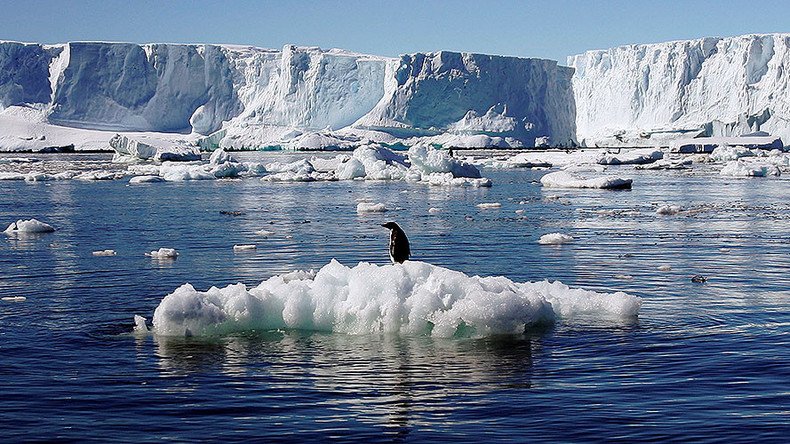Chunk of ice ‘the size of India’ disappears from polar regions

In a massive blow to those hoping to combat climate change, it’s been revealed that sea ice in both the Arctic and Antarctic has been lost, which equates to roughly the size of India, or two Alaskas.
Polar sea ice extent on December 4 was estimated to be around 3.84 million sq km (1.48 million square miles) below the average amount between 1981 and 2010, according to NSIDC satellite measurements.
Speaking to Reuters, Mark Serreze, director of the US National Snow and Ice Data Center (NSIDC) in Colorado, said: “There are some crazy things going on.”
🌎
— Alexander Verbeek 🌍 (@Alex_Verbeek) December 7, 2016
Wake up world!
A hunk of sea ice bigger than India has vanishedhttps://t.co/PbuWrikOrk#climate#arctic#science#environmentpic.twitter.com/WaCnFvuvy7
Though air temperatures at this time of year are below freezing near the surface of the Arctic Ocean, 2016 has witnessed “exceptional warmth.”
The growth of ice in November was 88,000 sq km (34,000 square miles) per day, which was slightly more than the average of 69,600 sq km per day.
For a short period in the middle of November, however, the total sea ice extent in fact decreased by 50,000 sq km (19,300 square miles), which was an “unprecedented occurrence” for the that time of year, according to NSIDC.
Arctic sea ice extent reached record lows in November - further evidence that we need to take action to protect it https://t.co/3yzV40jb7U
— WWF News (@WWFnews) December 6, 2016
Record temperatures in parts of the Arctic in November were high, standing at 20 degrees Celsius (36 degrees Fahrenheit) warmer than average.
John Turner from the British Antarctic Survey told Reuters that cold westerly winds which travel across the continent were the weakest they’ve been in two decades, which could have potentially resulted in warmer temperatures in the south.
The ozone layer over the area damaged by previous use of now-banned industrial chemicals could have also had an impact.
Turner said it was difficult to understand how it happened. “When we began getting satellite data from 1979, the sea ice started to decrease,” Turner said. “Everyone said it was global warming… but then it started to increase again.”
Last year, almost 200 governments vowed to phase out fossil fuels by the end of the century amid increasing global flooding and rising sea levels. Whether such a commitment will be fulfilled in the US is now unclear as President-elect Donald Trump previously branded man-made climate change a hoax, blaming China for its propagation.
READ MORE: Trump's climate change denialism portends dark days, climate researchers say












